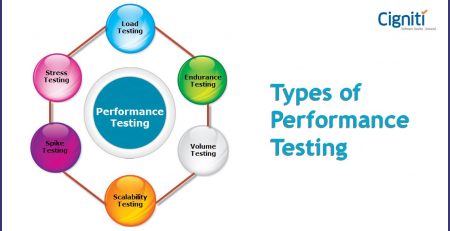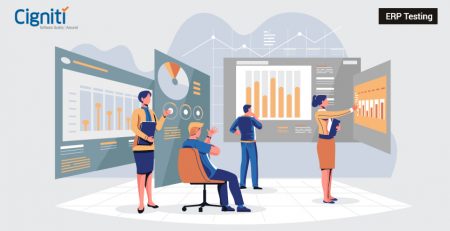Maximizing Performance: The Role of Observability in Modern Systems
The capacity to comprehend a system’s or application’s internal state and behavior based on its external outputs or events is called observability. In other words, it’s the capacity to extrapolate a system’s current state from its observable output without directly accessing its internal workings.
Observability is crucial in disciplines like software engineering, systems engineering, and control theory. It frequently refers to the capacity to observe, troubleshoot, and analyze complicated systems, particularly those that contain distributed or asynchronous components. It contributes to systems and applications’ long-term reliability, effectiveness, and simplicity.
Observability often entails gathering and analyzing various data, including logs, metrics, traces, and events, to understand how a system behaves. This data can be used to find problems, fix problems, and improve performance.
Why do we need to Implement Observability?
Gartner expects that by 2026, 70% of organizations successfully applying observability will achieve shorter decision-making latency, enabling competitive advantage for target business or IT processes.
Observability can aid in identifying problems and diagnosing errors in complex systems. Thanks to observability, engineers can quickly locate the root of a problem and take the necessary action. It also allows for the monitoring of various components and the collection of pertinent data.
Enhance system performance: Observability can help optimize system performance by offering insights into how various components interact and perform over time. This data can be utilized to pinpoint problem areas and make modifications that enhance system performance.
Better collaboration: Collaboration can be improved through observability across several teams working on a system. Observability can make it easier for teams to collaborate and solve issues more efficiently by supplying a single source of truth and a consistent knowledge of system behavior.
Improve system reliability: Observability can improve system reliability by providing early warning indicators of possible issues. By monitoring essential metrics and events, observability can assist teams in proactively addressing problems before they become significant.
Compliance requirements: Observability can also support compliance requirements by offering auditable records of system behavior. This can show that a system performs as planned and complies with all applicable regulations.
Observability is crucial for comprehending complex systems and maintaining their dependability, performance, and maintainability over time. Identifying issues, improving performance, and undertaking efficient system maintenance may be challenging without observability.
It’s for teams that use modern practices of DevOps, SRE, cloud Natives, and Microservice architectures. From this perspective, it becomes clear why the rise of many distributed microservices from Monoliths is tied so strongly to the rise of Observability.
Observability DevOps Use Cases
When we talk about the dev-ops team, we talk about the software supply chain, comprised of anything that goes into or affects your software from development through your CI/CD pipeline until it gets deployed into production. If the CI environment is flaky, then your entire purpose of implementing the CI/CD pipeline will be in jeopardy cause even though the code is checked in, it will take lots of time and effort (multiple runs) to confirm if the new code works fine, which will have a direct impact on the velocity.
This is where observability comes into play. Instrumenting the software supply chain to make details like repo, branch, artifact, Jenkins build type, Test suite name, test suite type, etc., available will give us a competitive advantage. By making these details available to be retrieved and observed, we can find and fix the issues faster, leading to faster development and release cycles directly correlated to better customer service.
SRE Observability Use Cases
As per the Google SRE book, good alerting must reflect immediate user impact, be actionable, be novel, and require investigation.
First, it must be a reliable indicator that your service’s user experience is in a degraded state. Second, the alert must be solvable.
SLOs work on service availability based on critical end-user journeys but not system metrics. Targets will be measured using SLI’s (Time based measures and event-based measures)
Traditional monitoring relies on a cause-based approach. A previously known cause is detected only if it indicates that a user might face undesirable symptoms (something is wrong). Which user, what, and why are they facing the issues? We will not know unless we implement observability.
Having observability in your system is critical for success when using SLOs. In an SLO-based world, you need observability; with rich telemetry, you can start wide and filter to reduce the search space. The approach means you can respond to determine the source of any problem, regardless of how novel the failure is. Instrumentation that provides rich and meaningful telemetry is the basis for this approach. Being able to ask one question after another and analyze the telemetry data to validate or falsify hypotheses quickly empowers teams to feel more confident in removing noisy, unhelpful alerts. We can create reliable alerts with actionable items when using SLO-based alerts with observability.
Observability vs. Monitoring Practices (Traditional)
Monitoring only provides insights into how your infrastructure is doing but cannot give any insights into what the end user is experiencing. Observability helps you deeply understand how the software you develop and ship performs when serving your customers, which is more valuable and essential to any organization.
Monitoring becomes more critical to your business if you provide systems to your customers as part of your core business strategy. If you provide software as part of your core business strategy, observability becomes a critical part of your business.
Benefits that an Organization can Derive by Implementing Observability
Observability can be implemented in systems and applications to give organizations several advantages.
Faster problem identification and resolution: With observability, teams can rapidly address issues before they worsen, lessening downtime and its impact on customers.
Enhanced system performance: Teams may detect bottlenecks, optimize system configurations, and fine-tune performance using observability. This could result in better system performance, quicker responses, and happier customers.
Better teamwork: Observability can offer a shared understanding of system behavior and facilitate improved teamwork amongst various teams. As a result, teams will be better able to collaborate across silos to address issues and improve system performance.
Enhanced Customer Experience: Observability can contribute to better customer experiences by enabling quicker problem identification and resolution and better system performance. This may result in increased client satisfaction and loyalty.
Cost savings: Observability can help find inefficiencies and cut waste, resulting in cost savings. For instance, teams can save cloud costs by recognizing unused resource utilization.
Security: Observability can be used to identify security dangers and empower teams to take action to stop them, enhancing security. As a result, data breaches and other security events may become less likely.
Compliance: Observability can offer auditable records of system behavior, allowing businesses to prove they comply with all applicable laws and standards.
Organizations can benefit from observability by optimizing system performance, enhancing customer experiences, and lowering costs and risks. By successfully applying observability, organizations can stay ahead of the curve in a continually evolving technology environment.
Services Cigniti Can Offer for Clients with Observability Requirements
As a services-based organization, our primary goal is to provide valuable assistance and support to our clients. Regarding observability requirements, here are some ways Cigniti can help with client requirements.
Consultation and Assessment: Offer consultation services to help clients understand the importance of observability and assess their current observability needs and capabilities. Conduct thorough assessments of their existing systems and infrastructure to identify gaps and opportunities for improvement.
Tool Selection and Implementation: Guide clients in selecting and implementing observability tools and platforms that best suit their requirements and budget. Assist in setting up and configuring monitoring, logging, and tracing solutions tailored to their specific use cases and environments.
Customization and Integration: Provide customization and integration services to tailor observability solutions to each client’s needs. Integrate observability tools with clients’ existing systems, applications, and workflows to ensure seamless operation and maximum effectiveness.
Training and Knowledge Transfer: Offer training programs and workshops to educate clients’ teams on observability best practices, tools, and methodologies. Empower their staff with the skills and knowledge to effectively utilize observability solutions and extract actionable insights from monitoring data.
Continuous Monitoring and Support: Provide ongoing monitoring and support services to ensure the reliability and effectiveness of clients’ observability setups. Monitor system performance, health, and security on behalf of clients, proactively identifying and addressing issues to minimize downtime and optimize performance.
Performance Analysis and Optimization: We offer performance analysis and optimization services to help clients leverage observability data to improve the efficiency and scalability of their systems. We analyze monitoring data to identify bottlenecks, optimize resource utilization, and fine-tune configurations for optimal performance.
Compliance and Reporting: Cigniti assists clients in meeting compliance requirements by implementing observability solutions that facilitate monitoring, logging, and auditing key metrics and events. We also generate compliance reports and documentation to demonstrate adherence to regulatory standards and industry best practices.
Continuous Improvement Initiatives: Partner with clients on continuous improvement initiatives to evolve and enhance their observability capabilities over time. Conduct regular reviews and assessments to identify areas for refinement and innovation, implementing new tools and methodologies to stay ahead of evolving requirements and challenges.
By offering comprehensive observability services and support, Cigniti can help clients maximize the value of their monitoring and analytics efforts, driving improved performance, reliability, and scalability across their systems and applications.
Need help? Contact our Performance Testing experts to learn more about maximizing performance in modern systems using Observability.





Leave a Reply